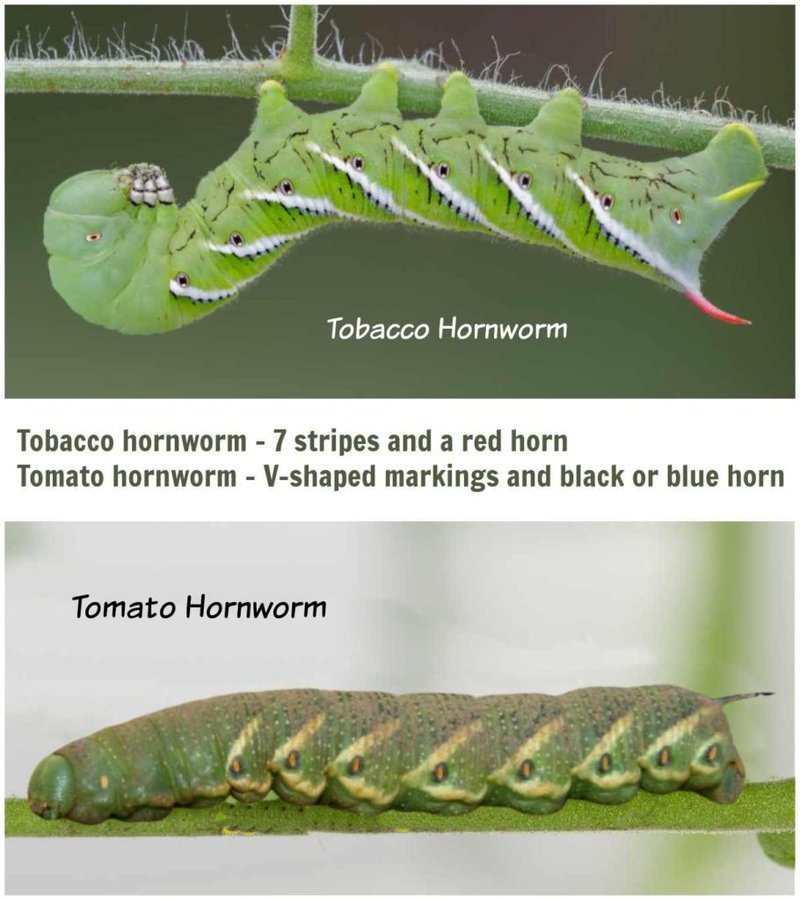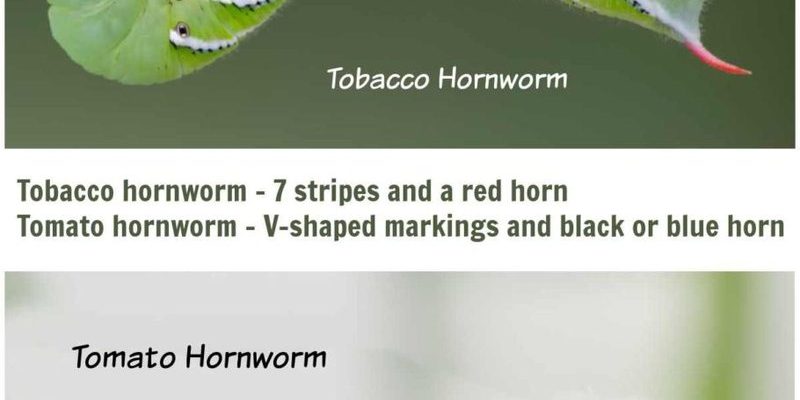
Let’s think of your garden like a beautiful, serene canvas. Just like artists sometimes accidentally spill paint, pests can mar your garden’s beauty too. Learning to tell apart hornworm damage from caterpillar damage is like knowing which colors to mix for the perfect shade. You wouldn’t want to put the wrong hue on your masterpiece, right? So, grab your gardening gloves; we’re diving into the world of pests!
What Are Hornworms?
Hornworms are the juvenile forms of certain moths, particularly the five-spotted hawk moth. These little green creatures are known for their impressive size—sometimes as long as 4 inches! They tend to blend into the foliage of plants, making them a sneaky foe. If you check your plants and find them, you might be shocked at just how much damage a few hornworms can do in a short time.
Generally, hornworms feast on plants like **tomatoes, peppers**, and **eggplants**. They can munch through leaves overnight, making them a nightmare for gardeners. The damage they do is often more extensive than you’d expect from their size. They have a voracious appetite, which means they can quickly turn a vibrant plant into a sad, skeletal version of itself.
You might be wondering, “How do I spot a hornworm?” Look for **green bodies** with faint white stripes and a distinct horn-like protrusion on their rear. If you catch a glimpse of one, it’s definitely time to take action!
What Are Caterpillars?
Caterpillars are the larval stage of butterflies and moths, and there are countless species out there. While some are beneficial, many caterpillars love to snack on garden plants. They come in various shapes, sizes, and colors—some even sport fuzzy or spiky appearances, warning you to keep your distance!
Unlike hornworms, some caterpillars have different feeding habits. For instance, the often-seen ***cabbage worm*** prefers cruciferous plants like cabbage and broccoli. Caterpillars can also cause significant damage, but their feeding patterns can vary. If they’re munching away, they sometimes cause holes instead of complete defoliation.
So, how do you recognize caterpillar damage? Keep an eye out for small **bite marks** on leaves or see if there are signs of webbing and frass (the fancy word for caterpillar poop) near the affected plants. This can help you pinpoint the pest causing trouble.
How to Identify Hornworm Damage
Spotting hornworm damage can be easier than you might think. These pests tend to leave behind telltale signs of their feasting, so let’s dig into that. First and foremost, hornworm damage usually presents as **large holes** in the leaves. If you notice your plants looking like they’ve been through a battle, it’s a strong signal that hornworms are lurking nearby.
Another common sign is the presence of their droppings (frass) on the ground or on the leaves themselves. And remember those green pests? You might not see them right away because they camouflage well with the leaves. However, if you spot a hornworm, you can often find other damage nearby.
A neat little tip: check the base of the plant. Hornworms like to rest close to their food source, so look around the stems. If you find holes and droppings together, it’s almost a certainty that you’re dealing with hornworms.
How to Identify Caterpillar Damage
Identifying caterpillar damage can sometimes feel like a scavenger hunt. Unlike the extensive munching of hornworms, many caterpillars simply take bite-sized chunks out of the leaves, creating a more scattered look. If you notice small holes spread across the foliage, you may be dealing with these pesky critters.
Additionally, you might spot caterpillar frass—usually more granular than hornworm droppings—either on the leaves or scattered below the plants. Many caterpillars also create a silk-like webbing, so check for that if you suspect their presence.
It’s worth mentioning that some caterpillars often have a more targeted diet. For instance, if your broccoli is mysteriously losing leaves but your tomato plants look fine, those are telltale signs that cabbage worms might be the culprits. Keep an eye on the types of plants affected; it can help narrow down the type of caterpillar you’re dealing with.
Preventing Hornworm Damage
Now that you know how to spot hornworm damage, let’s chat about prevention. The best way to deal with hornworms is to be proactive. One approach is to encourage natural predators in your garden, like **wasps**, which will lay eggs in hornworms. This sounds a bit gruesome, but it’s an effective natural method!
You can also use **row covers** to protect your plants from adult moths that lay the eggs that become hornworms. Additionally, regular inspections help catch them early. When you stroll through your garden, keep your eyes peeled for those sneaky, green pests before they become a big problem.
If you do end up with hornworms, handpicking them is a simple yet effective option. Just wear gloves, and toss them in a bucket of soapy water. It might feel a bit like a mini bug-hunting adventure!
Preventing Caterpillar Damage
Caterpillar prevention usually involves a mix of monitoring and natural repellents. One common method is to introduce beneficial insects like **ladybugs** and **lacewings**, which will help keep caterpillar populations in check. You can also plant **herbs** like basil or mint around your garden, as the strong scents may deter certain caterpillar species.
Another approach includes consistent monitoring. Regularly check your plants, especially the undersides of leaves, where many caterpillars like to hide. If you find evidence of caterpillars, you can use organic insecticides or even homemade sprays using ingredients like garlic or hot pepper to deter them.
Again, handpicking can be a viable solution if the infestation isn’t too severe. Just make sure to wear gloves if you’re uncomfortable handling them directly!
Knowing the difference between hornworm damage and caterpillar damage is essential for any gardener. It’s like being a detective in your own backyard! By identifying the type of pest and understanding their habits, you can take effective steps to protect your plants.
Remember, regular monitoring and introducing beneficial insects are great ways to safeguard your garden. Whether you’re dealing with hornworms or caterpillars, you can confidently manage these little pests and keep your plants healthy and thriving. Happy gardening, and may your plants flourish without the pesky interruptions of these critters!

